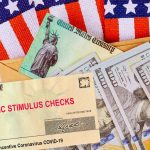Google has agreed to pay \$8.75 million to resolve a class-action lawsuit in Illinois, where the tech giant was accused of violating student privacy laws through its popular Google Workspace for Education (formerly G Suite) tools.
The lawsuit alleged that Google improperly collected and stored biometric data—unique identifiers such as voice and facial models—from students using school-issued Chromebooks and Google apps, all without required notice or consent under state law.
Although Google denies wrongdoing and insists the data was never misused for commercial gain, the settlement underscores how sensitive student information is handled in the digital age and sets a major precedent for privacy in education.
The Lawsuit: Biometric Privacy at the Forefront
The case, officially filed as H.K. et al. v. Google LLC, was brought under the Illinois Biometric Information Privacy Act (BIPA). This law is one of the toughest in the United States, requiring companies to:
- Inform individuals if biometric data is being collected.
- Disclose how long the data will be stored.
- Obtain written consent before collection.
The lawsuit claimed that features such as Voice Match and Face Match, embedded in certain Google services, created and retained models of students’ faces or voices. Parents and schools reportedly were not made fully aware of this collection, creating grounds for legal action under BIPA.
Google’s Response: No Admission of Wrongdoing
Google firmly denies the allegations. The company stated that biometric data tied to education accounts was never sold, shared for advertising, or used beyond the purpose of improving product functionality.
Still, Google chose to settle, citing the desire to avoid a prolonged court battle. For the company, this resolution prevents potential reputational damage and mounting legal costs, while allowing it to focus on its education technology services, widely used across the U.S. during and after the COVID-19 pandemic.
Why Illinois? A State With Stronger Privacy Laws
The lawsuit was only possible because of Illinois’ Biometric Information Privacy Act (BIPA), enacted in 2008. Unlike most states, Illinois provides a private right of action, meaning individuals can sue directly if they believe their biometric rights have been violated.
This law has already led to massive settlements with major corporations, including:
- Facebook – Paid \$650 million in 2020 for using facial recognition without proper consent.
- TikTok – Agreed to a \$92 million settlement in 2021 over similar allegations.
Google’s \$8.75 million settlement, while smaller in scale, continues this trend of Illinois being the most active battleground for biometric privacy lawsuits.
Who Is Eligible to Receive Money?
The settlement defines eligibility clearly. To qualify, claimants must meet all of the following conditions:
- They were enrolled in a school located in Illinois.
- The school provided access to Google Workspace for Education (or G Suite).
- They used these services between March 26, 2015, and May 15, 2025.
- A voice or face model was created via Voice Match or Face Match features.
Both minors and adults are eligible. For minors, a parent or legal guardian must file the claim, and any awarded funds must be used solely for the child’s benefit.
How Much Will Each Person Receive?
The settlement fund totals \$8.75 million, but payouts depend on how many valid claims are filed. After deducting legal fees and court costs, individual payments are expected to range from \$30 to \$100 per person.
While the amount may not seem large, advocates argue the case is more about holding corporations accountable and forcing transparency in how student data is handled.
Key Deadlines to Remember
For eligible Illinois families, deadlines are crucial:
- Claim Submission Deadline: October 16, 2025
- Opt-Out Deadline: September 1, 2025 (if individuals wish to retain the right to sue Google independently)
- Objection Deadline: September 1, 2025 (to formally oppose the settlement terms)
- Final Approval Hearing: October 14, 2025
If approved, payments will be issued shortly after the court grants final settlement approval.
How to File a Claim
Claimants can submit forms either online or by mail. Proof of enrollment and identity may be required, such as:
- Student ID card
- Report card
- Government-issued identification
Payment options are flexible, with funds available via:
- Direct deposit
- PayPal
- Venmo
- Zelle
- Prepaid Mastercard
- Paper check
Families are encouraged to file as early as possible and keep copies of submitted documents.
Wider Implications for Schools and Tech Companies
The settlement serves as a warning to both tech giants and school districts. Increasingly, digital tools are becoming central to classrooms, especially since the pandemic normalized virtual learning.
Yet, with technology comes risk. Schools rely heavily on companies like Google for free or low-cost services, but transparency about how student data is collected and stored remains a gray area.
This case could pressure:
- Tech firms to strengthen privacy disclosures.
- Schools to demand clearer contracts when adopting digital platforms.
- Lawmakers in other states to consider passing laws similar to Illinois’ BIPA.
The Broader Privacy Debate in Education
While many parents are grateful for the convenience of Chromebooks and Google apps, concerns about digital footprints persist. Children often use these tools daily, and their data may live in cloud servers indefinitely.
Experts warn that today’s classroom technology could leave tomorrow’s adults vulnerable if strict rules aren’t enforced now. The settlement has reignited debate over whether student data protections are strong enough nationwide.
5 FAQs
Q1: Why is Google paying \$8.75 million in Illinois?
A1: To settle a lawsuit claiming it collected student biometric data (face and voice models) without proper consent, violating Illinois’ Biometric Information Privacy Act.
Q2: Who qualifies for compensation in the settlement?
A2: Illinois students who used Google Workspace for Education or G Suite between March 26, 2015, and May 15, 2025, and had biometric data collected.
Q3: How much money will families get?
A3: Estimated payments range from \$30 to \$100 per person, depending on the number of claims.
Q4: What is the claim deadline?
A4: Eligible families must file claims by October 16, 2025.
Q5: How can claimants receive their payments?
A5: Through direct deposit, PayPal, Venmo, Zelle, prepaid cards, or mailed checks.










